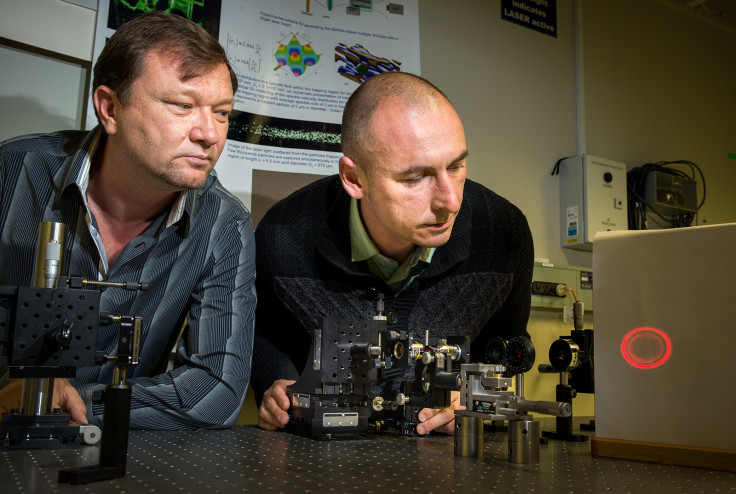Tractor Beam Moves Glass Particles Across Record Distance in Mini Death Star Demo

Australian physicists have used a tractor beam to pull and push tiny glass particles across a record distance.
A single laser beam, bright around the edges and dark in the centre, was used to repel or attract tiny glass particles measuring 0.2 millimetres at a distance of 20 centimetres.
This is the maximum distance of capture a tractor beam has ever demonstrated so far.
The scientists from Australian National University are sure the technique can be scaled up and used to remove polluting particles or even pick certain specimen, says a university press release.
Tractor beams are the stuff of science fiction, seen in Star Wars where the spacecraft is sucked in by the mysterious Death Star. Largely imagined to be the technique to capture and hold objects out in space, they have been candidates in Nasa's gameplan too.
The ANU experiment relies on heat energy to do the retraction.
The energy of the laser superheats the gold-coated particles and the air around them, creating hot spots in the surface of the particle.
Air particles colliding with these heat up and shoot away from the surface, causing the particle to recoil, in the opposite direction.
By making the back of the particle hotter than its front, it can be made to move against the light flow or vice versa. In fact, by controlling where the hot spots develop, the scientists can control the movement of the particles, and even keep them suspended in mid-air.
Earlier attempts at creating tractor beams relied on transferring momentum of the laser beam directly to the particles, but that can work only in vacuum with no particles in between.
Sound arrays and water have been used in earlier attempts to make tractor beams. While the present demonstration is an improvement over previous attempts, it is a long way from picking and moving bigger objects, forget spacecraft.
However, a sound technique does not require much time to go from particles to spacecraft. Understanding the constraints and removing the interferences could help scientists progress from water to air to wood, as Geek observes.
The research is published in the journal Nature Photonics.
© Copyright IBTimes 2025. All rights reserved.




















